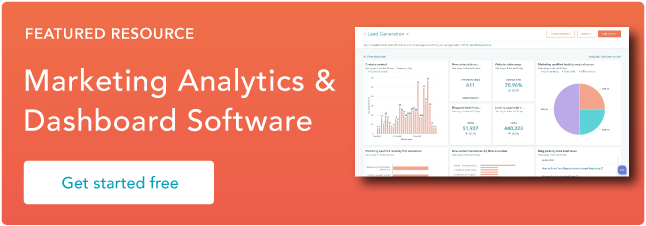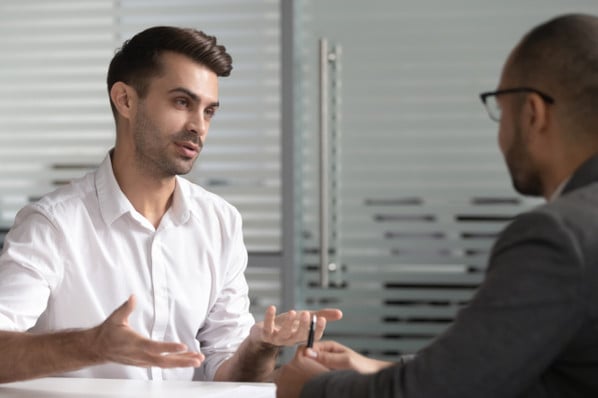Today, consumers are not only splitting up their time among mobile devices, tablets, desktops, televisions, and other devices — they are using these devices together to achieve their goals. Understanding multi-screen usage, especially how consumers use TV and a second screen, is therefore an imperative for web developers, managers, marketers, and other stakeholders.

In this post, we’ll look at some data that provides insights into how consumers are using multiple screens. Then, we’ll offer some tips for how you can engage consumers across these devices.
Multi-Screen Usage Data
1. 84% of US Adults say they use a second screen while watching television. (Engine Insights, 2021)
2. 94% of Gen Z and 95% of Millennials say they always, often, or sometimes find themselves multi-tasking and browsing the internet on a separate device while watching TV. (Engine Insights, 2021)

3. Women are more likely to use a second screen than men, with 89% of women saying they use two compared to 80% of men. (Engine Insights, 2021)
4. Of US adults that say they use a second screen, 70% say they use smartphones most often. (Engine Insights, 2021)
5. 77% of internet users in the Middle East and 74% in Africa and Asia-Pacific are most likely to use a mobile phone as their second screen. (Global Web Index, 2021)
6. Mobile makes up approximately 41% of website traffic, according to a HubSpot survey. (HubSpot, 2022)
7. US Adults say that checking email (63%), social media (61%) and text/instant messaging (56%) are the most frequent activities they do on their second screens. (Engine Insights, 2021)

8. 38% of internet users are playing games while watching TV. (Global Web Index, 2021)
9. Of US adults that use social media on their second screen, 85% say they use Facebook, 53% say Youtube, and 51% say Instagram. (Engine Insights, 2021)
10. Of Gen Z individuals that use social media on their second screen, Instagram (82%), Snapchat (65%), TikTok (61%), and YouTube (60%) were all used more than Facebook. (Engine Insights, 2021)
.webp?width=650&height=535&name=Why%20Web%20Developer%20and%20Managers%20Should%20Want%20Visitors%20to%20Click%20Through%20Multiple%20Screens%20%5BData%20%2B%20Tips%5D%20(1).webp)
11. Nearly half of individuals in the US (49%) use two or more screens while watching football. (Advocado, 2022)
12. 69% use a second screen—typically a mobile device or laptop—after seeing an ad to find more information on a product or service that piques their interest. (Advocado, 2022)
13. When viewers want to learn more about a product or service advertised on TV, they use a second screen to explore a brand's website or app (34%), via a search engine (30%), or by visiting an ecommerce site (19%). (Advocado, 2022)
Tips for Optimizing for Multi-Screen Usage
The data above indicates that the majority of consumers are using multiple screens at once. In order to reach consumers across multiple screens and often at the same time, it’s important that your messaging is consistent but tailored to the features of the respective device and platform. Below are some tips.
1. Analyze your audience.
To start, you should look at your web analytics and other data to analyze your audience. Knowing key demographics about your audience, like their age and gender, can help you understand what devices they use and how.
For example, in the survey by Engine Insights, approximately 81% of Gen Z and Millennials said they most often use a smartphone as their second screen while watching TV, whereas only 55% of Baby Boomers said they do. While only about 19% of Gen Z and 17% of Millennials opt for a tablet or laptop/desktop, 42% of Baby Boomers prefer to use those devices as their second screen.

This indicates that if your target audience is mostly Gen Z and Millenials, then you should primarily focus on optimizing your website on mobile for multi-screen usage. If your target audience is mostly Baby Boomers, then you should split your optimization efforts among mobile, tablet, and desktop.
2. Serve ads on mobile and in-app.
Your target audience using multiple screens simultaneously might seem like an obstacle to overcome. After all, you’re competing with the distractions of a smartphone, TV, and other devices all at once. However, each device provides a new opportunity to engage with your audience in a way that wasn’t possible when media consumption was limited to just one screen.
Advertisers in particular can seize these opportunities. For example, you can serve ads on TV and mobile devices or apps. The ads on the second screen should complement the first but also provide some new value or information. This will reinforce your message and further engage consumers.
3. Promote campaigns on social media.
The data above indicates that many adults use a second screen to browse social media. So you can use your social media channels to not only promote but expand your campaigns.
For example, Special K ran a TV ad during the 92nd Academy Award that centered around the slogan “You can’t fake delicious.” Simultaneously, Special K used the same slogan to reference the campaign when live tweeting about the outfits, nominations, and other aspects of the event. This is a great example of reinforcing messaging while also saying something new.

4. Send emails.
From the data above, we also know that the majority of adults using two screens are checking their email. So consider investing in email marketing in order to engage with consumers on their second screen.
Abandoned cart emails are a great opportunity for optimizing multi-screen usage, for example. A customer may have visited your site and begun the checkout process on one device, but abandoned it for some reason. If they receive an email with an exclusive offer, they may later see it on their phone or another device and complete their purchase.
.webp?width=500&height=503&name=Why%20Web%20Developer%20and%20Managers%20Should%20Want%20Visitors%20to%20Click%20Through%20Multiple%20Screens%20%5BData%20%2B%20Tips%5D-1%20(1).webp)
Optimizing for Multiple Screens
Today, consumers are spending more time on devices and using them simultaneously to complete tasks, like watching TV, making a purchase, checking emails, and browsing social media. If companies optimize their applications and marketing campaigns for this type of multi-screen usage, the scale of this opportunity to engage and convert consumers is massive.
Editor's note: This post was originally published in September 2012 and has been updated for comprehensiveness.





![10 Best Tools to Check Website Traffic [+ What They’re Best For]](https://www.hubspot.com/hubfs/GettyImages-1332148900%20copy.jpg)




